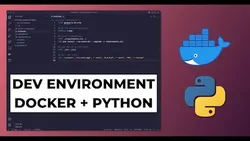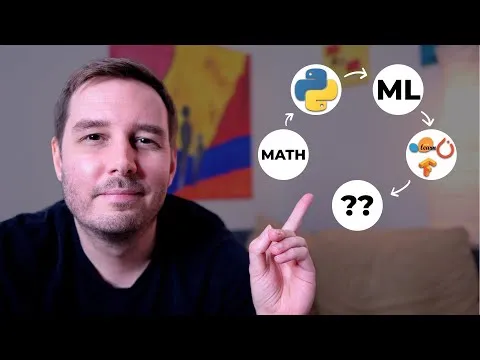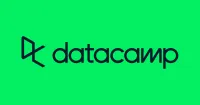
Dynamic Programming: Applications In Machine Learning and Genomics 
Dynamic programming and Hidden Markov Models are powerful tools for analyzing genetic strings and uncovering evolutionary relationships. This course explores the applications of these techniques in machine learning and genomics. ▼
ADVERTISEMENT
Course Feature
![]() Cost:
Cost:
Free
![]() Provider:
Provider:
Edx
![]() Certificate:
Certificate:
No Information
![]() Language:
Language:
English
![]() Start Date:
Start Date:
Self Paced
Course Overview
❗The content presented here is sourced directly from Edx platform. For comprehensive course details, including enrollment information, simply click on the 'Go to class' link on our website.
Updated in [March 06th, 2023]
Dynamic Programming is a powerful tool for solving complex problems in Machine Learning and Genomics. It is a method of optimization that allows us to find the most efficient solution to a problem by breaking it down into smaller sub-problems. This course will cover the fundamentals of dynamic programming, including how to apply it to simple string comparison methods, alignment of sequences, and how to generalise dynamic programming methods to handle a variety of situations. It will also cover models with hidden Markov chains and how to determine the most likely sequence of events given a set of outcomes and a limited amount of information. Finally, the course will explore how machine learning can be used in sequence alignment. By the end of the course, learners will have a comprehensive understanding of dynamic programming and its applications in Machine Learning and Genomics.
[Applications]
The application of the concepts learned in this course can be used in a variety of ways. For example, dynamic programming can be used to solve problems in machine learning, such as determining the most likely sequence of events given a set of outcomes and a limited amount of information. Additionally, dynamic programming can be used to align sequences, as well as to generalise dynamic programming methods to handle a variety of situations. Furthermore, dynamic programming can be used to create models with hidden markov chains. Finally, dynamic programming can be used to compare simple string methods.
[Career Paths]
1. Machine Learning Engineer: Machine Learning Engineers are responsible for developing and deploying machine learning models to solve real-world problems. They use dynamic programming techniques to create algorithms that can learn from data and make predictions. They also develop and maintain machine learning systems, and work with data scientists to ensure that the models are accurate and reliable. As the demand for machine learning increases, the need for Machine Learning Engineers is expected to grow.
2. Genomics Data Scientist: Genomics Data Scientists use dynamic programming techniques to analyze large datasets of genomic data. They develop algorithms to identify patterns in the data and use them to make predictions about the behavior of genes and proteins. They also develop models to predict the effects of genetic mutations on the health of individuals. As the field of genomics continues to grow, the demand for Genomics Data Scientists is expected to increase.
3. Bioinformatics Engineer: Bioinformatics Engineers use dynamic programming techniques to develop algorithms and software for analyzing biological data. They develop models to predict the effects of genetic mutations on the health of individuals, and use machine learning to identify patterns in the data. As the field of bioinformatics continues to grow, the demand for Bioinformatics Engineers is expected to increase.
4. Computational Biologist: Computational Biologists use dynamic programming techniques to develop algorithms and software for analyzing biological data. They develop models to predict the effects of genetic mutations on the health of individuals, and use machine learning to identify patterns in the data. As the field of computational biology continues to grow, the demand for Computational Biologists is expected to increase.
[Education Paths]
1. Bachelor of Science in Computer Science: This degree path focuses on the fundamentals of computer science, including programming, algorithms, data structures, and software engineering. It also covers topics such as artificial intelligence, machine learning, and robotics. With the increasing demand for data-driven solutions, this degree path is becoming increasingly popular and is expected to continue to grow in the future.
2. Master of Science in Artificial Intelligence: This degree path focuses on the development of intelligent systems and their applications. It covers topics such as machine learning, natural language processing, computer vision, and robotics. With the increasing demand for AI-driven solutions, this degree path is becoming increasingly popular and is expected to continue to grow in the future.
3. Doctor of Philosophy in Machine Learning: This degree path focuses on the development of advanced machine learning algorithms and their applications. It covers topics such as deep learning, reinforcement learning, and probabilistic graphical models. With the increasing demand for AI-driven solutions, this degree path is becoming increasingly popular and is expected to continue to grow in the future.
4. Master of Science in Genomics: This degree path focuses on the application of genomics to various fields, such as medicine, agriculture, and biotechnology. It covers topics such as gene sequencing, gene expression, and bioinformatics. With the increasing demand for data-driven solutions, this degree path is becoming increasingly popular and is expected to continue to grow in the future.
Course Provider

Provider Edx's Stats at AZClass
Discussion and Reviews
0.0 (Based on 0 reviews)
Explore Similar Online Courses

Teaching Online: Mindset & Strategies For Instructor Success

How to create a great dev environment with Docker

Python for Informatics: Exploring Information

Social Network Analysis

Introduction to Systematic Review and Meta-Analysis

The Analytics Edge

DCO042 - Python For Informatics

Causal Diagrams: Draw Your Assumptions Before Your Conclusions

Whole genome sequencing of bacterial genomes - tools and applications

How I would learn Machine Learning (if I could start over)

Learn Data Science and Machine Learning on Microsoft Azure


Start your review of Dynamic Programming: Applications In Machine Learning and Genomics